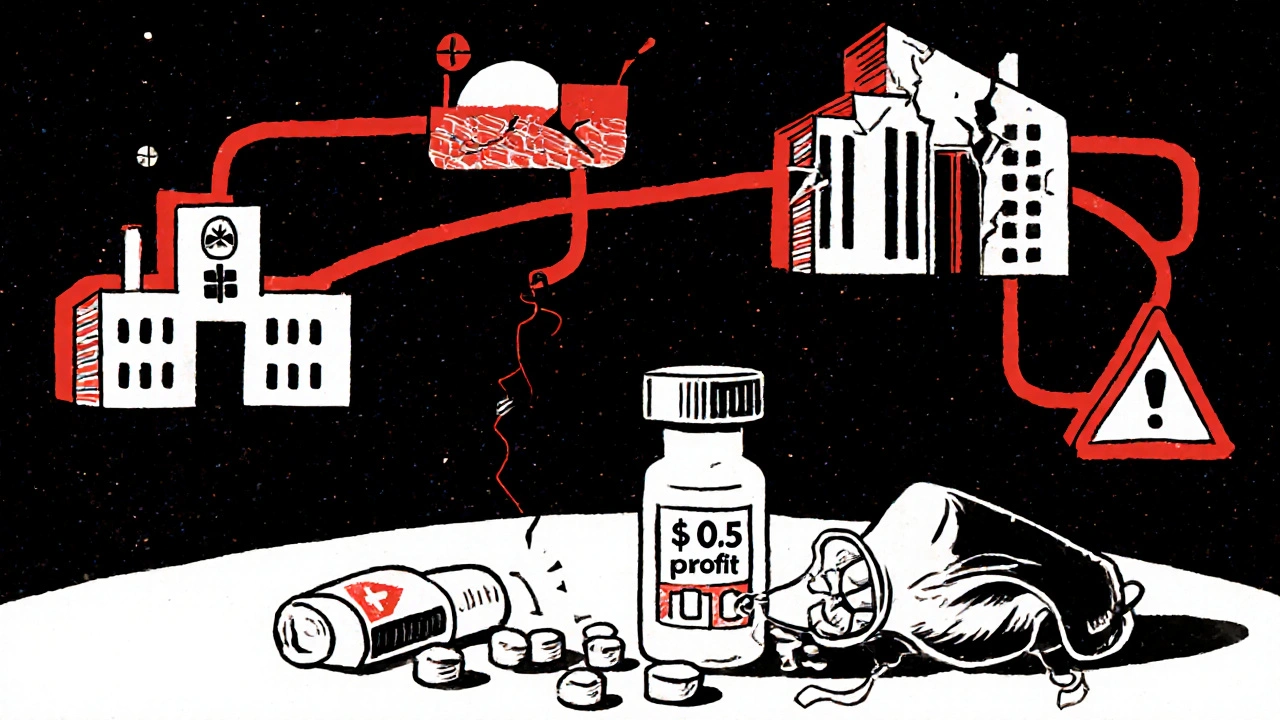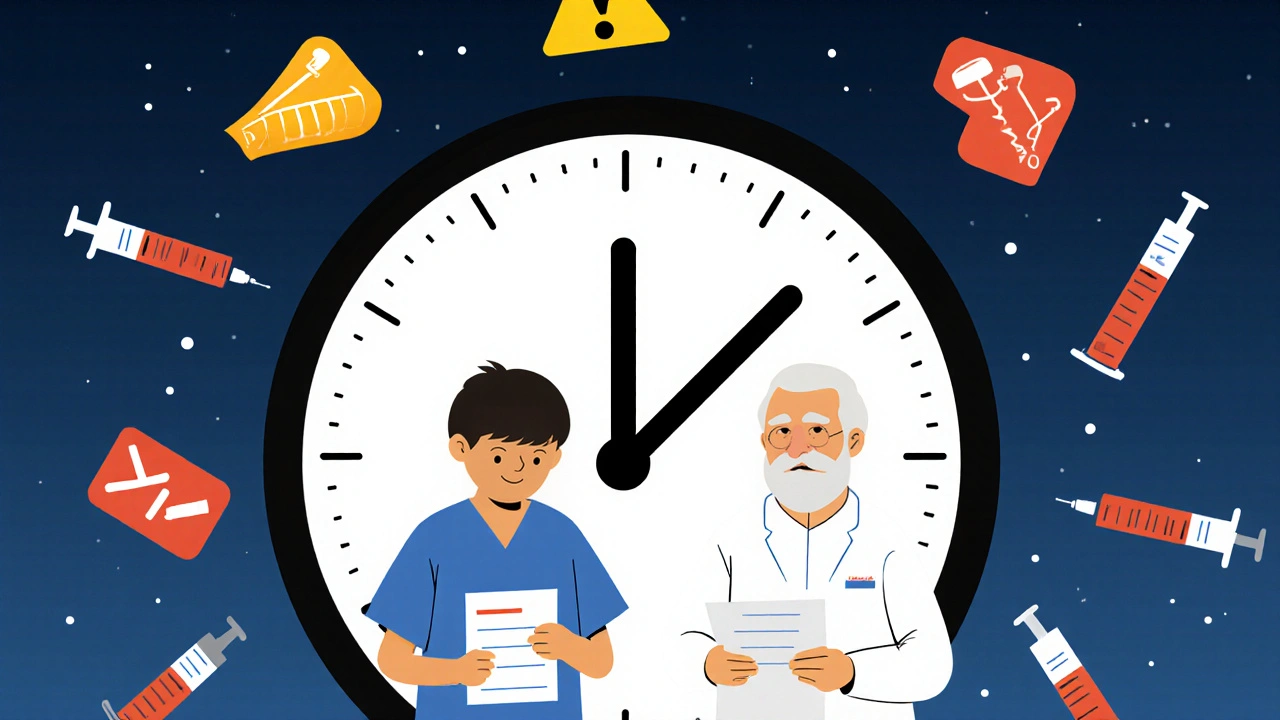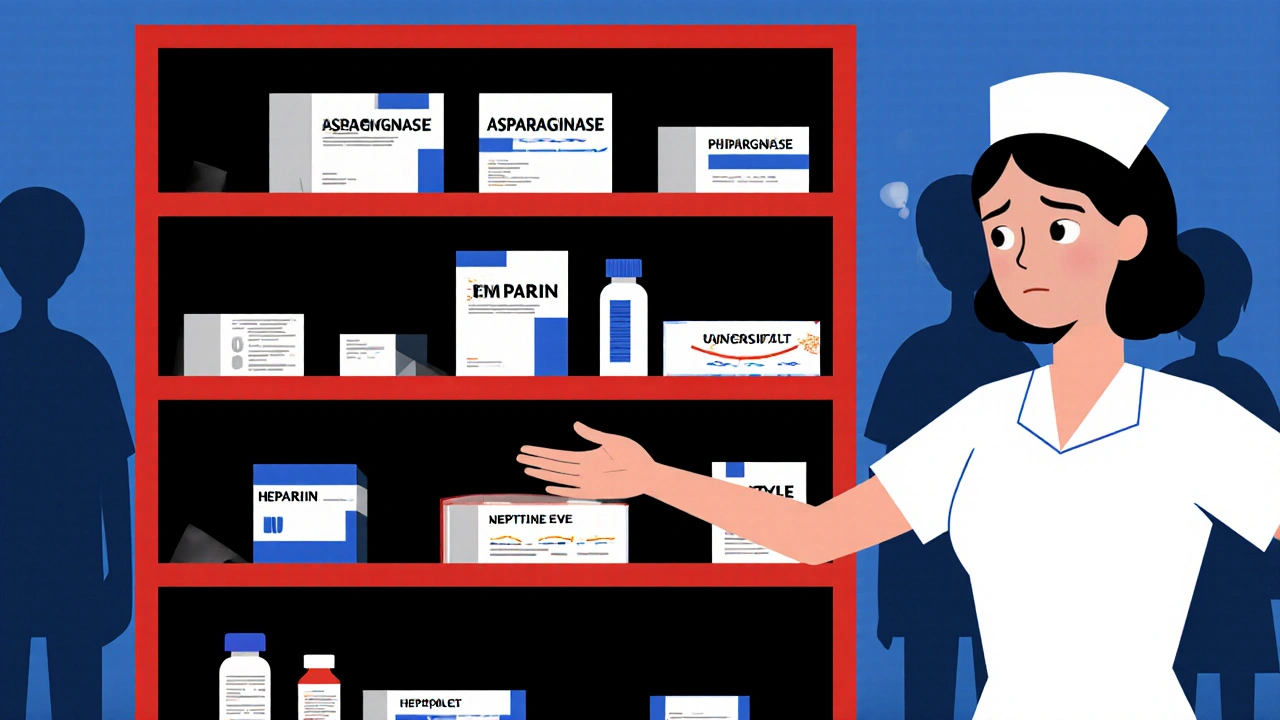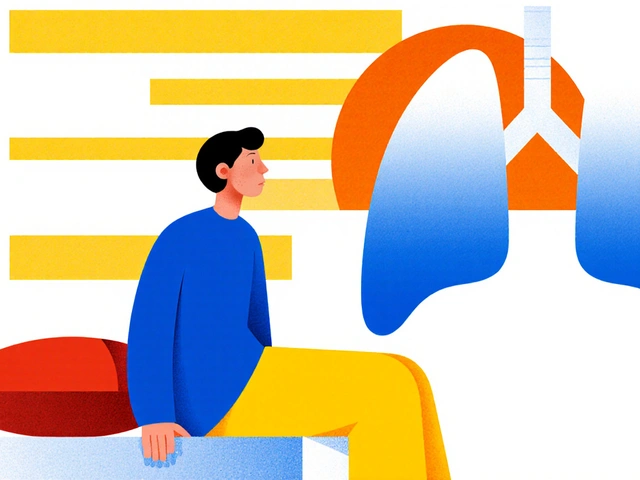When a life-saving drug isn’t in stock, it’s not just an inventory problem-it’s a medical emergency. In 2025, over 250 medications in the U.S. remain in short supply, forcing doctors to delay cancer treatments, swap out antibiotics with riskier alternatives, or even cancel surgeries because there’s no heparin to keep blood from clotting during operations. This isn’t a rare glitch. It’s the new normal-and patients are paying the price.
What Happens When a Critical Drug Disappears?
Imagine you’re undergoing chemotherapy for leukemia. Your treatment plan depends on a drug called asparaginase. One week, it’s available. The next, it’s gone. Your oncologist has to choose between delaying your next dose by two weeks or switching to a less effective, more toxic alternative. That’s not hypothetical. It’s happening right now. In 2023, shortages of asparaginase, nelarabine, and heparin lasted up to five years in some cases, according to the U.S. Department of Health and Human Services.These aren’t obscure drugs. They’re the backbone of modern medicine. Antimicrobials, cancer drugs, anesthesia agents, and even basic IV fluids like saline are all in short supply. When these vanish, hospitals scramble. Pharmacists spend 15 to 20 hours a week per shortage just tracking down alternatives, retraining staff, and rewriting protocols. Pediatric hospitals, which need special formulations for children, are hit even harder-25% more staff time is needed just to manage the same number of shortages.
The Human Cost: Delays, Errors, and Dying Patients
Behind every shortage statistic is a person. A 7-year-old with leukemia waiting for treatment. A 68-year-old with sepsis given a weaker antibiotic because the real one is out. A woman scheduled for heart surgery whose procedure gets canceled because there’s no heparin to prevent clots.
Studies show that drug shortages lead to a 43% spike in medication errors. Why? Because when you’re forced to switch from one drug to another, even if they’re supposed to be similar, dosing gets confused. Labels change. Nurses aren’t trained on the new one. Mistakes happen. In 2023, nearly one-third of pharmacy directors reported adverse events directly caused by shortages.
And it’s not just hospitals. Outpatient infusion centers-where patients get chemotherapy, immune therapies, and pain meds-had 41% of treatments delayed, skipped, or canceled. Patients with chronic pain can’t fill their opioid prescriptions. Diabetics can’t get insulin in certain formulations. People with autoimmune diseases miss their biologic infusions. Some skip doses. Some stop taking meds altogether. A 2024 JAMA Network Open analysis found that shortages are driving patients to forego treatment entirely.
Why Is This Happening? The Broken Supply Chain
Most of these shortages aren’t caused by sudden demand spikes. They’re the result of a broken system. Eighty-three percent of shortages involve generic drugs-the cheapest, most widely used medications. Why? Because making them isn’t profitable. A single vial of a generic antibiotic might cost $1. The profit margin? Less than 5 cents. So manufacturers stop making them. Or they shut down plants because the return isn’t worth the risk.
Then there’s the global supply chain. Nearly half of all shortages trace back to raw materials coming from just one or two countries. If a factory in India or China has a quality issue, it doesn’t just affect one drug-it affects dozens. The FDA says 47% of shortages are due to fractured global supply chains. Another 32% are from manufacturing failures-contaminated batches, equipment breakdowns, or compliance violations.
Even when a drug is available, distribution bottlenecks can make it seem like it’s not. A hospital might have 100 units on order, but they’re stuck in a warehouse 500 miles away. With no real-time tracking, pharmacists don’t know what’s coming-or when.

The Financial Burden on Hospitals and Patients
Drug shortages don’t just hurt patients-they drain hospitals. In 2023, hospitals spent nearly $900 million extra just on labor to manage shortages. That’s not counting the cost of buying more expensive alternatives, paying for extended hospital stays, or treating complications from wrong medications.
Patients feel it too. Out-of-pocket costs jump an average of 18.7% during shortages. If your usual insulin is gone and you have to buy a different brand, your copay might double. Medicare beneficiaries are especially vulnerable. One study estimates that 1.1 million Medicare patients could die over the next decade because they can’t afford their prescriptions. That’s not speculation. It’s projected based on current trends.
What’s Being Done? And Is It Enough?
The FDA now requires drugmakers to report potential shortages six months in advance. That’s a step forward. Since the rule started in 2023, some manufacturers have started warning hospitals earlier. But it’s still not enough. Many shortages are still discovered too late. And not all shortages are reported-some are hidden because companies fear losing market share.
Hospitals are building shortage management teams, using real-time tracking software, and joining group purchasing organizations like Vizient, which has saved members $300 million in inventory costs since 2023. But these are band-aids. They don’t fix the root problem: low profit margins on generic drugs.
Some experts are pushing for government incentives to keep production of essential generics alive. Others want to bring manufacturing back to the U.S. or allied countries. By 2027, 78% of hospital systems plan to increase onshoring of critical medications. But that will take years-and billions of dollars.

What You Can Do
If you’re on a medication that’s been in short supply, talk to your doctor now. Ask: Is there a substitute? What happens if we can’t get it? Are there clinical trials or patient assistance programs? Don’t wait until your prescription runs out.
Patients with chronic conditions should keep a 30-day backup supply if possible. Talk to your pharmacy about alternative formulations. Some drugs come in different strengths or delivery methods-sometimes those are still available even when the standard version isn’t.
And if you’re a caregiver or advocate, speak up. Contact your representatives. Drug shortages aren’t just a healthcare issue-they’re a policy failure. The public needs to demand better.
The Bottom Line
Drug shortages are not a temporary hiccup. They’re a systemic collapse in how we produce and distribute life-saving medicines. Every delay, every substitution, every skipped dose adds up. The numbers are staggering: 253 drugs in shortage as of mid-2025. 43% more medication errors. $900 million wasted annually. Thousands of procedures canceled. Lives at risk.
The system is broken. And until we fix the economics of drug manufacturing, the shortages will keep coming. Until then, patients are left holding the bag-waiting, worrying, and hoping the next dose arrives on time.






Leisha Haynes
November 26, 2025 AT 06:53Also why is no one talking about how the FDA approves 3 factories in India to make 80% of our generics and then acts surprised when one has a mold problem
Wake up people
Shirou Spade
November 27, 2025 AT 13:22Lisa Odence
November 29, 2025 AT 11:17Andrew McAfee
November 29, 2025 AT 16:50Patricia McElhinney
December 1, 2025 AT 11:09Agastya Shukla
December 2, 2025 AT 22:35Arup Kuri
December 4, 2025 AT 13:47Dolapo Eniola
December 5, 2025 AT 18:06giselle kate
December 7, 2025 AT 00:30Shivam Goel
December 7, 2025 AT 01:00